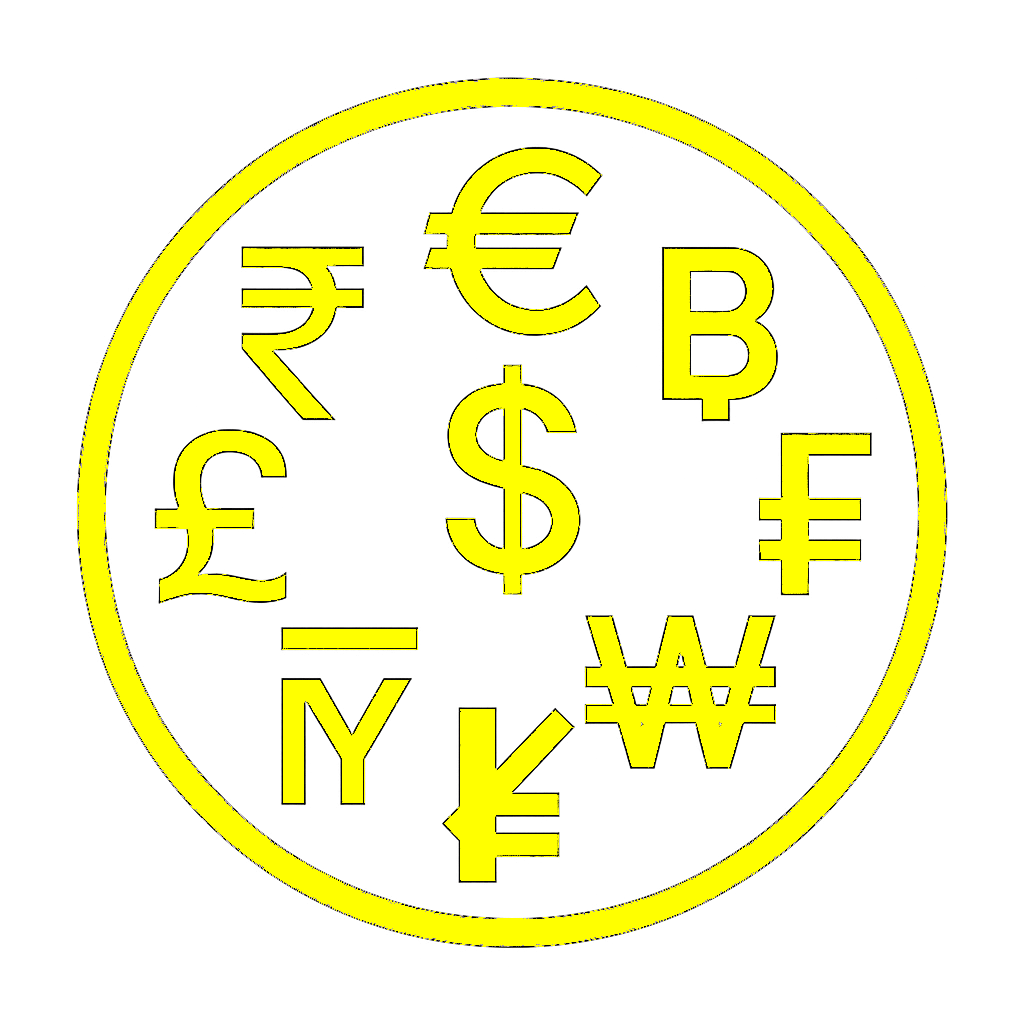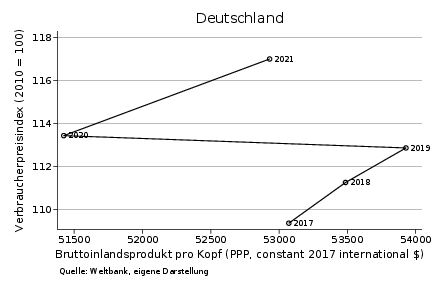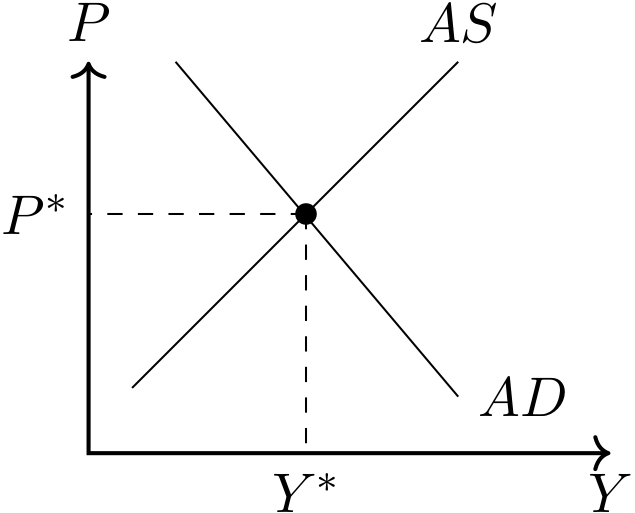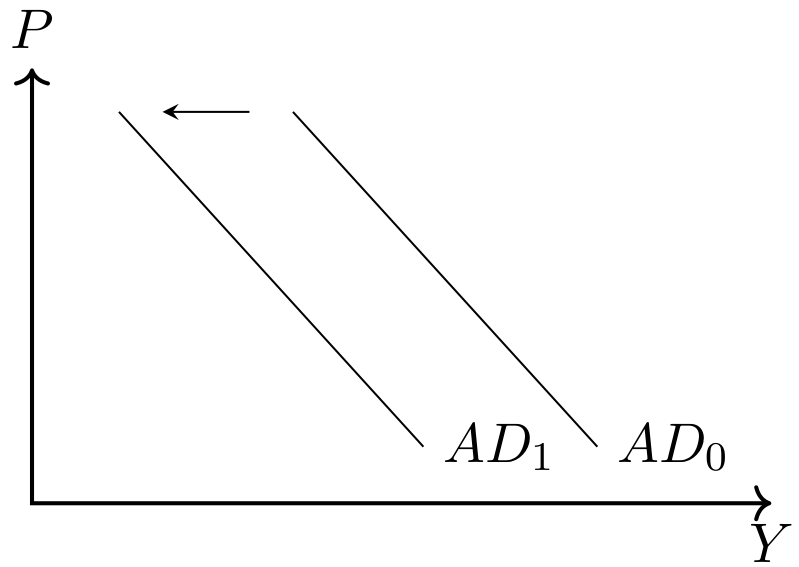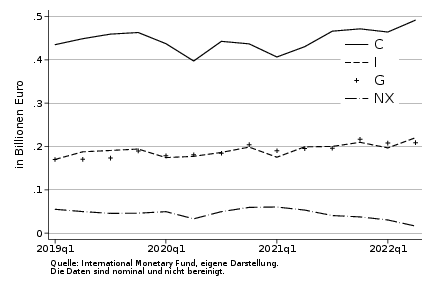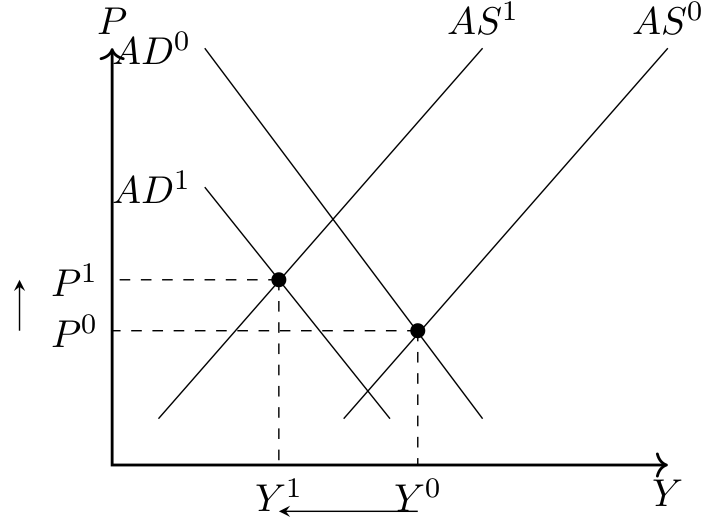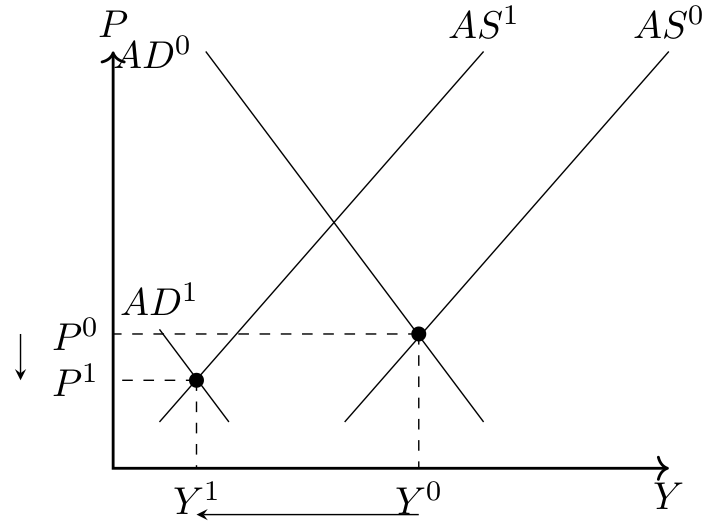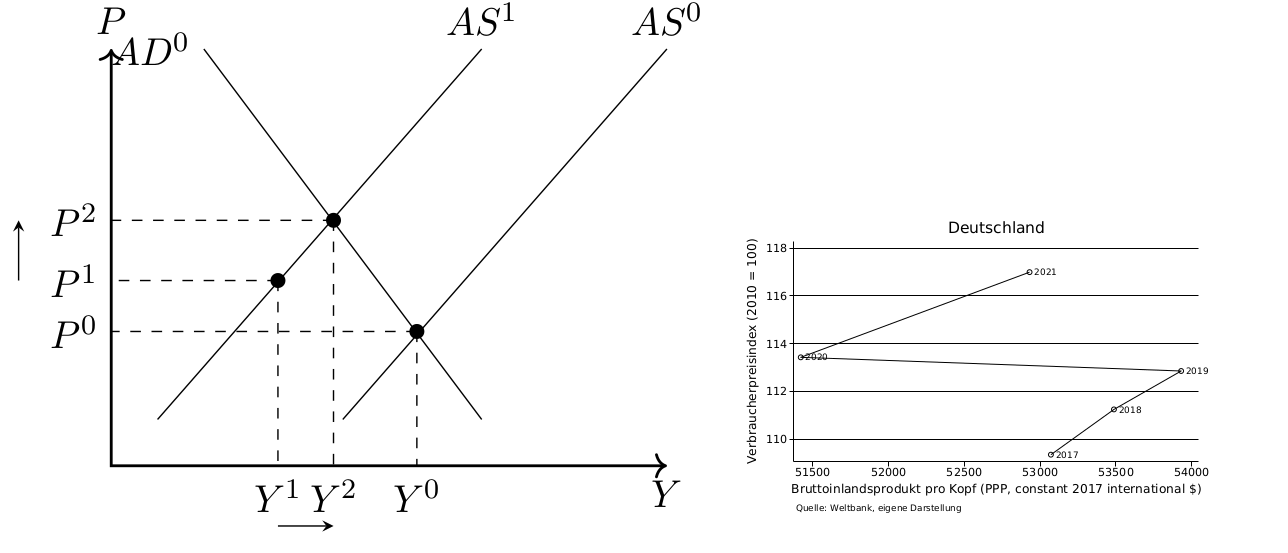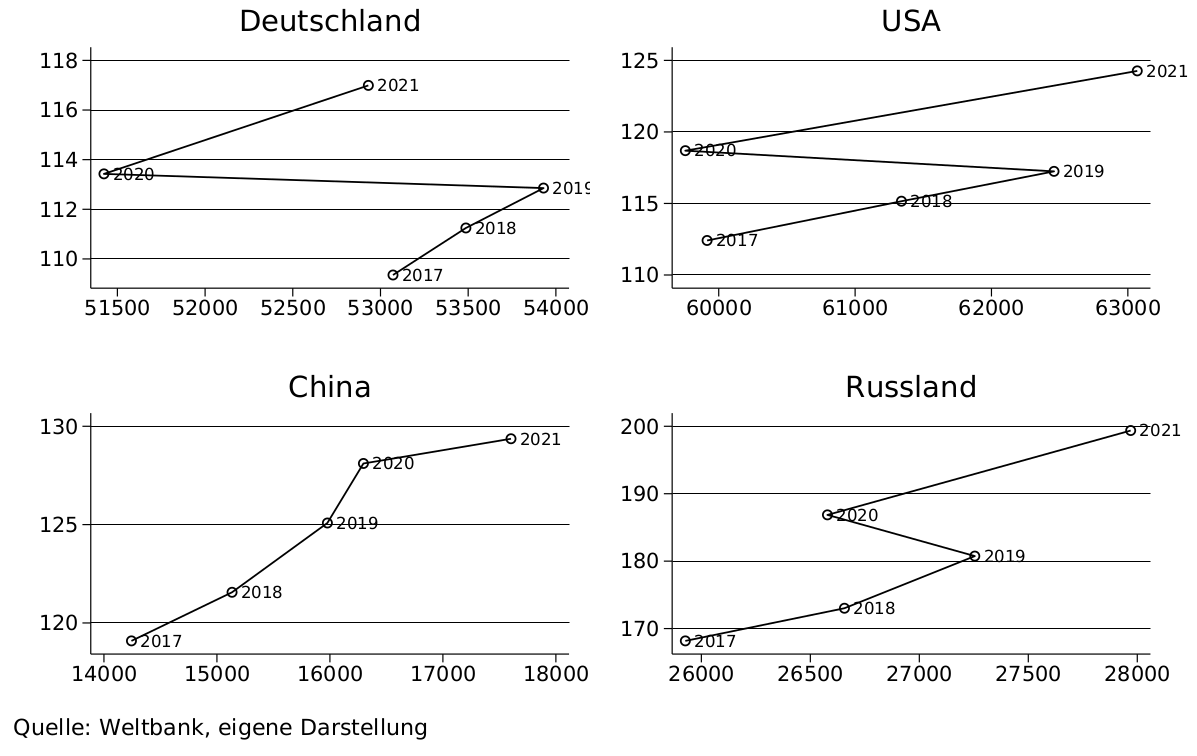27 Aggregate supply and demand
This chapter discusses the AS-AD model.
Recommended videos:
27.1 Economic shocks and consequences
The first lockdown on March 23, 2020 was a shock, see Figure 27.1.
An economic shock is “an unexpected or unpredictable event that affects an economy, either positively or negatively. Technically, it is an unpredictable change in exogenous factors—that is, factors unexplained by an economic model—that may influence endogenous economic variables.” (Wikipedia, 2025)
During the Corona crisis, various markets experienced significant shifts. Let us consider the Gross Domestic Product (GDP) and the price level over time in Figure 27.3.
The GDP indicates the total value of all goods and services produced as final goods and services within the national borders of an economy during one year, after deduction of all intermediate consumption.
The price level is an economic indicator that shows how many monetary units must be paid in an economy for the prices of certain goods and services in a basket of goods.
How did GDP fall while keeping price levels roughly constant?
- Less buying/selling: Value added decreased.
- Why? Was there less demand or fewer offerings? For example, were reduced hospitality sales due to fewer guests (demand down), business closures (supply down), or both?
- Apart from anecdotal evidence, assessing all effects empirically can be challenging. Typically, only price and successfully demanded quantity can be observed.
- Solution: Use theory: AS-AD Model.
General equilibrium
Supply and demand interplay determines market equilibrium, see Figure 27.4.
27.2 Aggregated Demand (AD)
The AD curve represents total goods demand by everyone for goods and services as a function of the price level within a given period.
- Aggregate demand equals the sum of:
- Consumer goods demand (\(C\))
- Investments (\(I\))
- Government expenditure (\(G\))
- Net exports (\(NEX\) = demand from abroad \(EX\) minus domestic demand for foreign goods \(IM\))
\[ Y^D = C + G + I + \underbrace{EX - IM}_{NEX}\]
- As prices rise, demand falls (ceteris paribus).
- If \(Y^D\) decreases (and \(P\) remains constant), the curve shifts left, see Figure 27.5.
During the first lockdown in Germany, consumer goods demand and net exports fell. Government demand and demand for capital goods remained virtually unchanged.
27.3 Aggregated Supply (AS)
The AS curve depicts the value of goods suppliers can provide within a given period, depending on the price level. Supply usually increases with prices.
Supply usually increases with prices and the first lockdown certainly caused a leftward shift in the AS curve, see Figure 27.7.
Supply Factors:
- Resources (input prices/availability): Impacted by pandemic, war, disasters, politics.
- Regulation: Impacted by taxes, laws, subsidies.
- Labor costs: Impacted by unions, minimum wages, taxes.
- Productivity: Impacted by technology, R&D, management practices.
27.4 International data
27.5 Summary
- Aggregate demand arises from supply-demand interaction.
- Policymakers can counteract negative effects of exogenous shocks:
- Increase government spending and cut taxes to enhance consumption, investment, exports.
- Ease fears to bolster consumption and investment.
- Reduce production costs and promote productivity (short-time allowance, subsidized loans, R&D support, etc.).
The AS-AD model aids understanding, anticipating, and analyzing macroeconomic ratios.
